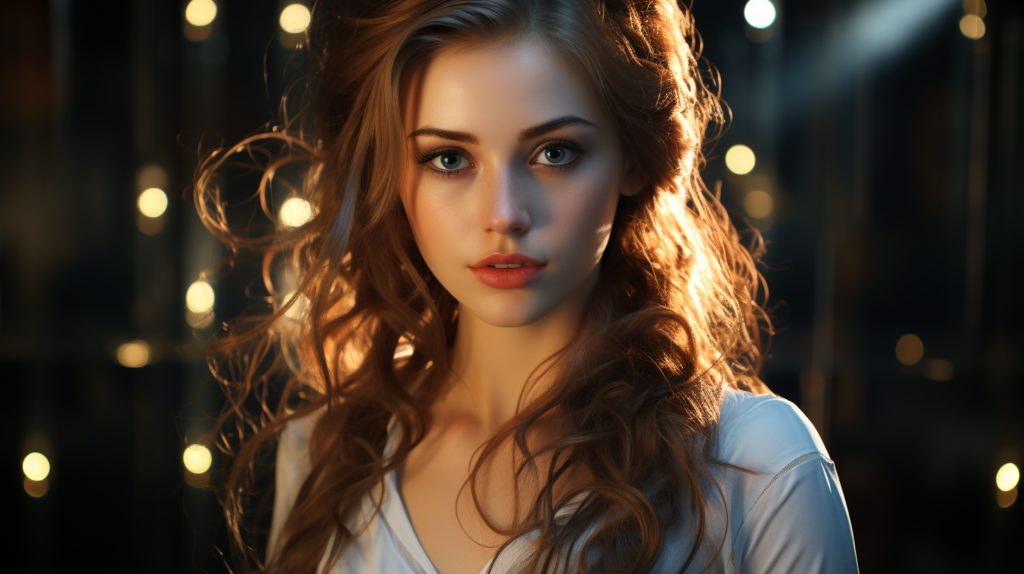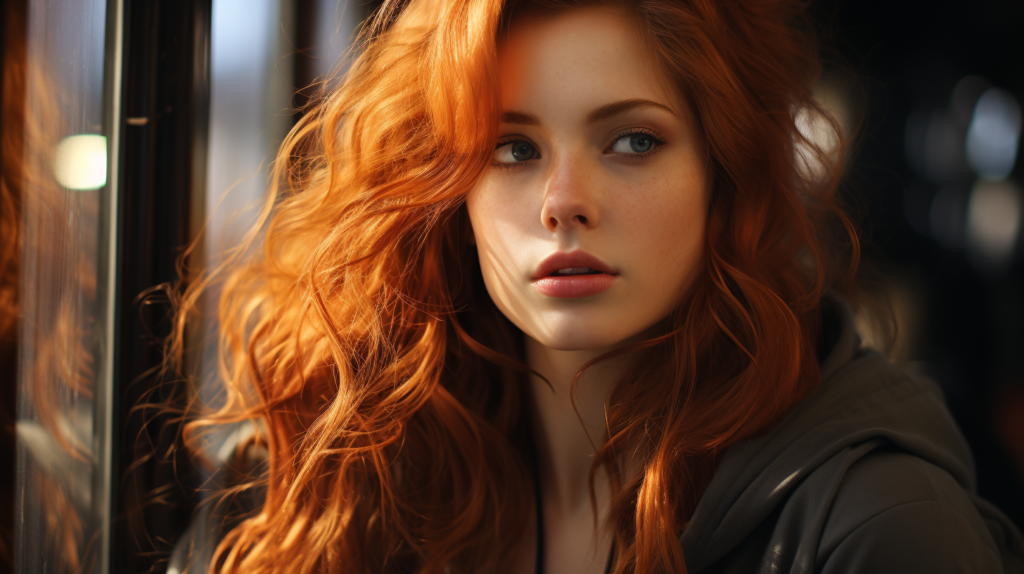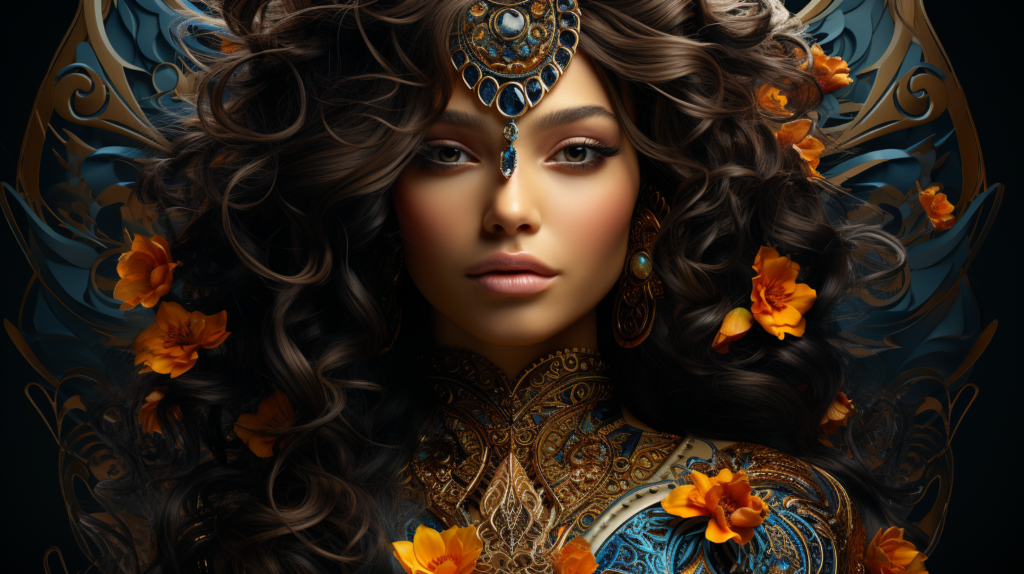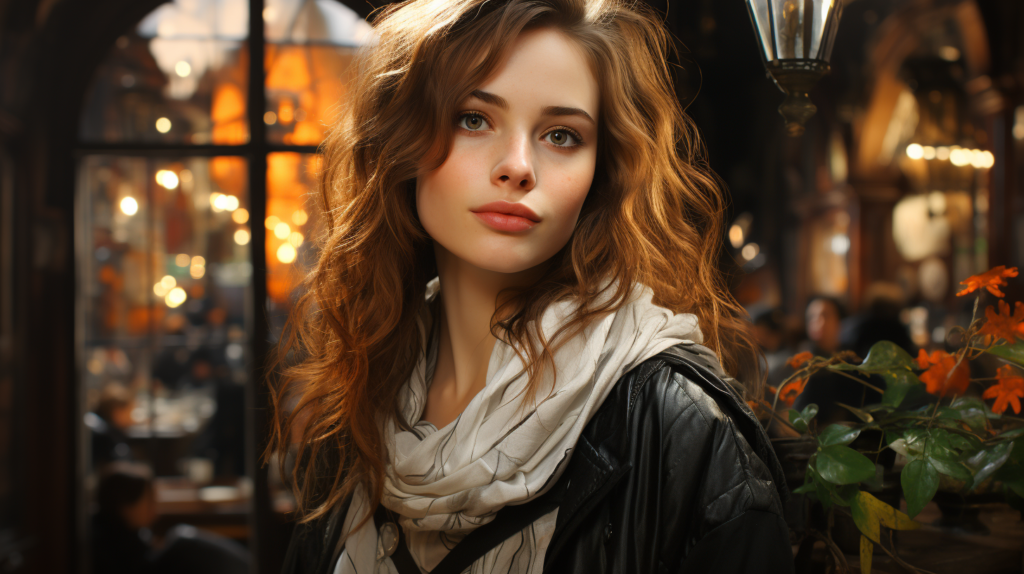From the sweep of a grand vista to the intimate beauty of a close-up, cinematic visuals are capable of taking your breath away. In an ever-expanding market of visual media, creating stunning cinematic visuals is an essential part of any filmmaker’s skill set. For those looking to learn the basics of creating beautiful visuals, look no further as we dive into the art of creating cinematic visuals.
1. Introducing the Power of Cinematic Visuals
Film holds a certain power, even more so when the visuals are strong — it captures and holds the attention of viewers, immersing them in a story, whether it be a documentary or simply an advertisement. Here, we discuss the power of cinematic visuals, and how they can make a lasting impression.
Unique Qualities
Cinematic visuals hold a unique advantage, drawing inspiration from various sources, such as illustration, portraiture, and nature. They are a bridge between the written word and the emotions of the audience, allowing a narrative to be told more effectively. The art of composition is a powerful tool, bringing life to stories that are otherwise just words.
- Engage with viewers based on story, stills, motion sequences
- Unlimited opportunities to play with composition
- Imparts a unique perspective
Unparalleled Impact
Nothing evokes emotion like a cinematic visual. From the sweeping upwards movement of a shot to the slow fade away to black, powerful impressions linger in viewers’ minds. The layering of music and sound effects bring another emotional dimension to the visuals, making a story truly unforgettable.
- Creates a long lasting impression
- Draws out emotions
- Allows viewers to step into another reality

2. Setting the Scene: The Art of Cinematography
Cinematography is an art that can transport us to another world. One of the most important elements of a successful film is its cinematography, which serves to capture the audience visually and set the scene for the story. Here’s a closer look at some of the ways in which cinematography can help to establish tension, tone and emotion in a scene:
- Lighting: Lighting is an integral part of cinematography, used to create the mood and atmosphere of a scene. It can be used to convey a range of emotions, from fear and dread to warmth and joy. By experimenting with light levels, shadows and colors, the cinematographer can create unique and captivating visuals that complement the story.
- Camera Movement: The ability to move the camera can be used to draw attention to different elements of a story, increase tension, or direct the audience’s eye to particular characters or situations. It can also be used to alter the perspective of the audience, providing them with a different perspective on the scene.
- Composition: Composition is the art of arranging elements within a frame in order to create a visual impression. The position and angle of the camera, the position of objects and characters within the frame, and the use of foreground and background elements all help to enhance the narrative and emotion of a scene.
By thoughtfully crafting the visuals of a scene, the cinematographer can powerfully express the intended emotion of a story and draw viewers into the narrative. With careful consideration of lighting, camera movement and composition, the cinematographer can create captivating visuals that transport the audience to the realm of the story.
3. Capturing the Audience’s Attention with Composition
Good composition is all about drawing the eye and capturing the attention of the audience. It doesn’t matter if you’re working on a digital design for a website or a painting for the wall – getting your composition just right is paramount.
Fortunately, there are a few key tips and tricks you can bear in mind to get your composition just right.
- Keep It Balanced – It’s important to create a composition with even spaces between the elements. Balanced compositions won’t be overwhelming and can aid in keeping the attention of the audience.
- Have A Focal Point – Avoid having too many subject matters in the piece, instead, choose a primary object and make it stand out with lighting, vivid colors and contrast. It also helps using frames to help guide the attention.
- Play with Placement – Once you’ve chosen the main subject, it’s time to place it in your composition. Don’t be afraid to experiment and move it around, until it works for you. Often it’s just a matter of moving something a few inches left or right to make a world of difference.
When it comes to composition, the tiniest changes can make a big difference. Play around with it and don’t be afraid to take risks, because the payoff might be more exciting than you expect!

4. Tapping into Color Theory for Expressive Shots
Color theory is a powerful tool for creating strong visuals and guiding viewers’ emotions in photography. When used in the right way, it can help enhance a photograph’s storytelling capability, effectively drawing your viewer in.
Here are tips for tapping into color theory for expressing shots:
- Think in complementary pairs. For example, green and red will direct viewers’ attention to the center, making it especially powerful for a portrait.
- Choose either cool or warm hues. Working with a cool color palette (blue, green, purple) will evoke a serene feeling, as if the viewer is being invited to a retreat. Warmer tones (red, yellow, orange) are associated with excitement and passion.
- Create contrast within a shot by pairing both warm and cool tones. Adding a strong accent color (white, black, etc.) can create an interesting interplay between light and dark.
The importance of lighting should never be overlooked. Colors can look vastly different in different light, so take the time to play with the light and modify the colors in your photographs for optimal results.
5. Maximizing Lighting and Mood
The right lighting can make or break a room’s atmosphere and mood. Fortunately, there are some simple steps you can take to bring a great ambience.
1. Layer Lighting
A great way to achieve an optimal mix of light is to combine three color temperatures: warm, cool, and natural. Warm lighting should be used as a base layer for the living space, while cool lighting should be used to bring the ceiling down. Finally, natural light should be used to enhance the living room’s atmosphere.
2. Adjust the Brightness
You can change the atmosphere of a room by adjusting light levels. Dim the lights for a more intimate, cozy feel, while brightening them can create a more open, airy atmosphere. Experiment with different light levels and adjust the brightness accordingly.
3. Utilize Automation
Smart lighting systems allow you to create a variety of lighting settings in a room with just a few taps on your phone or tablet. You can even program your lighting systems to turn on and off automatically, so you can get the perfect lighting without lifting a finger.
- Lighting can make or break the atmosphere in a room, so it’s important to get it right.
- Layering your lighting can give you the perfect combination of warm, cool, and natural tones.
- Adjust light levels to create different moods, and use automated lighting systems for convenience.

6. Utilizing a Variety of Cameras and Lenses
As you become familiar with photography and refine your skills, you will likely want to experiment with different cameras and lenses to see which will work best for your particular style and needs. Different cameras and lenses can provide a variety of benefits, from greater image quality to greater versatility.
Image Quality – Depending on your budget and the style of photography you are interested in, you may want to consider investing in higher quality cameras and lenses. Professional grade cameras and lenses will generally provide you with sharper image quality, better low-light performance, and greater dynamic range.
Versatility – At times it can be useful to have access to cameras and lenses that offer wider angles, or longer zooms. This could be helpful in capturing various types of shots in various settings. There is also a great deal of variety among cameras and lenses when it comes to special features, such as image stabilisation, or eye-detection autofocusing.
- Invest in higher quality cameras and lenses for greater image quality
- Different cameras and lenses can offer a variety of benefits
- Special features such as image stabilisation and eye-detection autofocusing come in handy
7. Enhancing Clarity with Post-production Tools
Polishing a video project can be done quickly and easily with post-production tools. From audio and video filters to text editing tools, the range of possibilities is wide.
Gain the upper hand over perfectionists and make a statement with stunning visuals by using these tools. Put a creative spin on everyday scenes by adding color filters and splicing repetitive parts. Balance out the audio levels of a scene with noise reduction tools, giving a piece a cinematic feel. Harness the power of the text editor to add captions, adjust fonts and modify colors.
Give your projects a professional touch and make them stand out from the crowd by using the right post-production tools:
- Color Grading – take advantage of color grading finesse to get the range of hues just right
- Sound Reducing – enhance the acoustics of a project and come up with a richer audio
- Story Editing – interact with the storyline by rearranging scenes and adding text
Post-production tools increase clarity and capability, giving you and your creativity room to grow. Spice up the look and feel of videos with the right tools and get the most out of your productions.

8. Crafting the Perfect Story with Visuals
The power of visuals cannot be overstated when it comes to crafting a great story. The right image can add texture and richness to your narrative, while the wrong image can easily derail the entire experience. Here are some tips and tricks to help you create an engaging story with visuals.
- Know the audience: Before you begin, make sure you understand who your audience is and what they will be looking for in a visual story.
- Choose the right visual:The next step is to choose the right visuals for your story. Use images that complement the story, are appropriate for the audience, and represent the message you want to convey.
- Embrace the power of motion:Video can help keep your audience engaged and provide a more dynamic storytelling experience. If you are comfortable with creating videos or animations, these can be great for your story.
Finally, consider how you can use visual elements to enhance the overall visual experience. Enhance your story with overlays and watermarks, introduce creative transitions from one image to the next, and use interactive elements to keep viewers engaged. With the right visuals, you can easily take your story to the next level.
9. Innovation in Filmmaking Through Clever Use of Visuals
With changing times, filmmakers have come up with innovative approaches to storytelling with the help of eye-catching visuals to keep their audience hooked. To amplify the impact of the narrative, cinematography and editing have to work in harmony to create a captivating composition onscreen. Here are some of the ways filmmakers have pushed the limits with visuals.
Colour Palettes
- Utilising a specific colour palette helps give an aesthetic to a film that is unique. Be it the bright yellow and pink in the Quentin Tarantino’s ‘Pulp Fiction’ or the muted orange and green in ‘The Social Network’ by David Fincher, to the stark white of ‘The Grand Budapest Hotel’ by Wes Anderson.
- Not only do these colours add to the visual appeal of the movie, they also play an important role in the narration. For example, yellow and pink used in Pulp Fiction helps the audience convince of a sketchy, wired and drug-ridden universe of gangsters.
Amplifying the Mood
- By using creative angles and playing with the lighting visuals, filmmakers can create a mood that can either be whimsical or terrifying, that amplifies the emotion of the scene like never before. For example, Tim Burton’s aesthetically gloomy ‘Nightmare before Christmas’ is particularly known for its haunting shadows and mythical light.
- Again, with creative editing, the director can also play with time to inject an element of surprise. Jump cuts and parallel editing set up for spectacular montages, that is most successfully used in Christopher Nolan’s ‘The Dark Knight’ trilogy.
From the use of interesting lenses to creative camera movements, with the help of technology filmmakers have been experimenting on the visuals and have managed to keep audiences amazed. This brings a new dimension of cinematic experience to cinemas across the globe.
10. Unlocking the Possibilities of Cinematic Imagery
For any image-maker, goes beyond mastering a particular technique. It’s about understanding the fundamentals and having the creativity to combine them in unique ways. Here are 10 elements of cinematic images that will help take your visuals to the next level.
- Lighting: Knowing how to control, manipulate and utilize light is essential for achieving a truly cinematic aesthetic. Hard lighting, soft lighting, color temperature, exposure levels…play around with them to find the right balance.
- Composition: Composition is key – create depth and add visual interest by investing in thoughtful staging and shot angles. Pay attention to where the foreground, background and sides of the frame come together.
- Movement: Cameras are all about movement. Immerse viewers and create atmosphere by panning, tilting, and shifting the focus to capture motion. You can also use drones and camera sliders to take photos in unexpected ways.
- Colors: Colour can be a powerful way to convey emotion and tell stories. That’s why it’s important to make conscious choices about colour palette, contrast and saturation.
- Textures: Textures can add depth and realism to a scene. There are many techniques to achieve them, from practical set-dressings to layering and manipulation in post-production.
Beyond these fundamentals, cinematic images are obtained through experimentation. Use your imagination and make bold decisions – let your vision shape the final product. A mix of lighting, camera movement, composition, color and texture can elevate your visuals from bland and uninspired to cinematic masterpieces.
If you’re looking for further inspiration, study the work of renowned directors such as Francis Ford Coppola and Emir Kusturica. Their ability to blend all these elements provides viewers with a captivating sensory experience. Take what you learn and put that knowledge into practice – you’ll soon be creating your own masterpieces.
The possibilities are endless when it comes to developing stunning cinematic visuals. By taking the time to research your options, consider your equipment, and embrace experimenting, you can create incredible visuals that will take your projects to the next level. With an eye for detail and an understanding of the power of visual storytelling, you’ll find that creating stunning cinematic visuals can be an exhilarating and rewarding experience.
